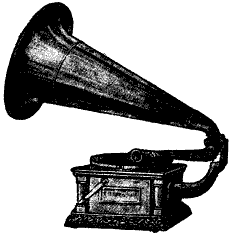With all of the incredible technology we have in Recording Studios these days it is very easy to take it all for granted and forget how lucky we are to be able to have the flexibility and ease that we enjoy in Recording Studios in 2015.
The Earliest Recording Studios
Before there even were Recording Studios Sound Recording was a very basic and mechanical task. The earliest method of sound recording involved the live recording of a performance directly to a recording medium. This was an entirely mechanical process, often called acoustical recording. The sound of the performer(s) was captured by a diaphrag, with the cutting needle connected to it. The needle cut a spiral groove in the recording medium. To make this process as efficient as possible, the diaphragm was located at the apex of a cone and the performers would crowd around the other end. If a performer was too loud then they would need to move back from the mouth of the cone to avoid drowning out the other performers.
Recording Studios – Phonograph
The phongraph expanded on the principles of the phonautograph. Invented by Thomas Edison in 1877,[2] the phonograph was a device with a cylinder covered with an impressionable material such as tin foil, lead, or wax on which a stylus etched grooves. The depth of the grooves made by the stylus corresponded to changes in air pressure created by the original sound. The recording could be played back by tracing a needle through the groove and amplifying, through mechanical means, the resulting vibrations. A disadvantage of the early phonographs was the difficulty of reproducing the phonograph cylinders in mass production.
This changed with the advent of the gramophone, which was patented by Emile Berliner in 1887. The gramophone imprinted grooves on the flat side of a shellac disc rather than the outside of a cylinder. Instead of recording by varying the depth of the groove (vertically), as with the phonograph, the vibration of the recording stylus was across the width of the track (horizontally). The depth of the groove remained constant. Berliner called this audio disc a “gramophone record”, although it was often called a “phonograph record” in U.S. English.
Continued in Part II.





